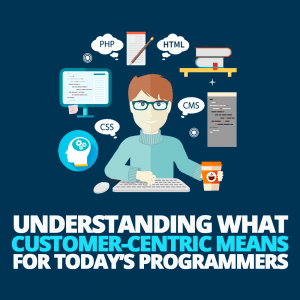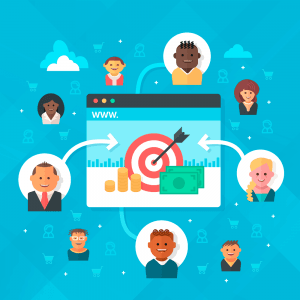Understanding What Customer-Centric Means for Today’s Programmers
Historically, software development centered around large, pre-configured milestones. A team would work on a new project leading up to release, stage an official—and sometimes very public—launch, and then move on to maintenance.
This would mean some of the “live” team would be dedicated to working on that project for the foreseeable future, delivering patches, updates, and maybe even a few new features. The rest of the team would move on to the next big project, where it would start all over again.
Some development teams are still structured this way, but these days, they are the exception more than they are the rule. Rapid technological advances, changing customer sentiment, and a boom in innovation have altered the industry. Your clientele demand a new form of modular service, designed to cater to their needs, demands, and growth.
How Modern Development Has Changed
Today, teams aren’t focused on big launches. Yes, they still happen, but development continues long into the future. Companies are no longer just maintaining products; they are improving and adapting them through a continuous delivery process. This allows development teams to deliver a product that’s in constant motion, as opposed to the static applications of the past.
Looking in, the change seems a bit forced, but in reality, it happened naturally. Market changes and shifts in customer demands sparked the transformation, which led to a new, more lively software and development cycle.
This framework is what drives software development today, and has also made the landscape wholly different for the average programmer or developer. Believe it or not, it’s about being more customer-focused or customer-centric, looking out for the needs and demands of the clientele you serve.
Because it might not be immediately apparent, it makes sense to first understand why this new development and design philosophy is considered “customer-friendly.”
What Does Customer-Centric Development Look Like?
Aside from citing the noticeable “market changes,” what is it that made the entire industry focus on a more active, continuous development cycle? The answer is customer need or sentiment. What is it that your client needs from you, and how can you further their efficiency and performance through active development on your end?
Many clients don’t have the time or patience to wait three to six months for a major update or new feature set. You can always claim it’s due to millennials entering the workforce—who now demand nearly instantaneous feedback—but really, it’s the entire market.
Mobile and modern technologies have made it so we can interact, engage, and consume content at any time from anywhere. With that featureset at our fingertips, we now expect it to permeate across channels and even enterprise. Plus, instant feedback tends to boost engagement and productivity, and instills a close-knit culture.
Being always ”on” and connected, along with the existence of numerous mobile technologies, make it possible to do things that were never possible in the past.
With a continuous development cycle, you can deliver incremental and regular updates for a mobile application, for instance, to adapt to market trends, security problems, or even to add additional support. Most people have their devices set to auto-download and install said updates, so a regular push means a near-instant boost for your clientele to the latest version of an app or piece of software.
That also translates back into the business and enterprise world, where companies must ensure their systems are running the latest code, are prepared for timely market changes, and are incredibly responsive and reliable. They must be ready to meet their customers’ demands for hyper-fast service or delivery.
Customer Feedback During Development Is Crucial
Past development methodologies didn’t put any less emphasis on a customers’ needs and wants, but it did generally factor these elements in at separate times. You might, for example, meet with the client beforehand, hash out the necessary features and components, and then go into development armed with this information. Later, you take the near-final product and demo it to those affected with the purpose of receiving feedback—hopefully not too negative.
Today, customer feedback is collected and weighed all the way through a project—not just at specific touchpoints. For example, perhaps a recently added feature isn’t working, so you and your client collectively decide to axe it. Or maybe you realize in live development that something isn’t as efficient as it should be, so you collaborate with your client to find a better solution.
It’s more than that, though. With live software, your clients are generally using it at the same time you’re working on it. This allows you and your team to work more dynamically, adapting on the fly to what the customer experiences or needs. You may even discover or encounter entirely new requirements as the project develops.
It’s this need to be flexible that drives a more customer-friendly process. It’s all part of the five core tenets or principles for creating a customer-centric service and project.
Tips for Being More Customer-Centric
Being “customer-focused” means adopting a more top-to-bottom approach. It calls for embedding your foundation and processes with a core question: What do your client and your client’s customers want?
This is only possible by incorporating the following:
- Solid communication: Throughout the entire project, you must be able to discern what your client and your client’s customers want and need, even when they aren’t able to articulate these themselves. This requires close and reliable communication with those involved, and the flexibility to adapt development strategies and work in progress to meet said requirements.
- Constant feedback: Communication affords the review and feedback information necessary to adapt, change, and grow, but it’s on you and your team to incorporate what you learn. To follow the client’s vision, you must maintain an open stream of feedback and adaptability throughout any project.
- Appropriate prototyping: Even with the most accurate of development cycles, the end product can change considerably throughout the course of the project. So, it’s always important stakeholders and clients have the opportunity to preview and experience the project in action.
Customers Become Design Partners, Beta Testers, and Loyal Users
Because your customers will often be using the software or tools you’re developing in the background, they are instantly crucial to the entire operation. They become design partners, offering insights on how a particular feature or platform works. They also serve as beta testers, finding bugs or significant issues you may have missed during pre-deployment. And they become your most loyal and early followers, rooting for your success.
This is exactly how companies like IBM, Intuit, and Rich have overhauled their development processes to become more customer-centric. The incredible part is that it’s not forced. It’s not something you have to necessarily be conscious of, nor is it something you need to pivot and brace for. During live development, your customers just naturally become part of the family, part of the team.
And that, fellow developers and programmers, is what it means to become more “customer-centric” in your approach to development and design.
| Published on Java Code Geeks with permission by Nathan Sykes, partner at our JCG program. See the original article here: Understanding What Customer-Centric Means for Today’s Programmers Opinions expressed by Java Code Geeks contributors are their own. |





